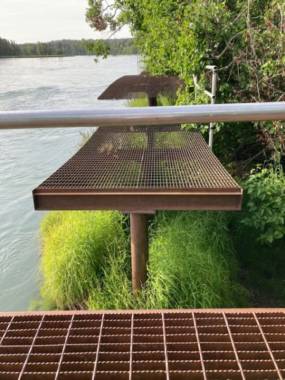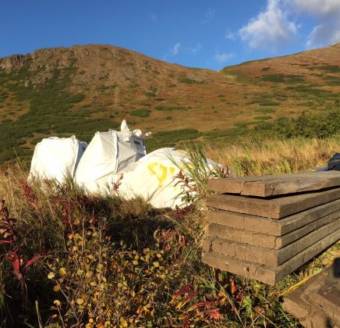
More Alaskans than ever are spending time outdoors this summer, and state parks officials say that in some areas the new traffic is making long-running stresses worse.
Parking lots at some trailheads are overflowing, and some trails are eroding from heavy use, park officials said.
Ricky Gease, the director of the state park system, says that there have been more Alaskans in state parks by far than any other year in the parks’ 50-year history.
“Some areas have seen a 50 to 100% increase in the number of vehicles that are using the trailhead and the number of people on trails,” he said.
Data from Google shows that visitation in parks is up even more: over 150% statewide.
But the use is uneven, with trailheads and parks that are normally popular with out-of-state tourists getting fewer visits. And Gease says often those sites — which tend to be public use cabins and historical sites — are the ones that bring in the most revenue to the park system.
“Overall, we’re going to see a decrease in revenues that are coming into the state parks through the end of FY2020, and probably likely continuing into this fiscal year,” he said.
At the same time, pandemic-related problems are bumping up the costs to maintain parks. Normally, many volunteer campground hosts drive RVs up the Al-Can highway in the springtime and ease the burden of park staff to maintain grounds.

“Typically, those volunteers are older volunteers, and at the time when they were coming up in April and May, [they were] kind of that target group that was at risk or more at risk for COVID. So we did not have any of those folks come up this year,” said Gease.
In some areas, park managers worry they’ll have to close walkways, parking lots or campgrounds if they can’t maintain them properly. That’s the case on the Kenai River, where special walkways that provide anglers access to the river are deteriorating, says Jack Blackwell, superintendent of the Kenai and Prince William Sound area parks.
“These facilities are falling apart, and we aren’t going to be able to put band-aids on these very much longer before we have to close them down,” he said.
There are also erosion issues that got worse during Southcentral’s hunker down order this spring. That pushed hikers on to trails early, when they were still wet, muddy and more susceptible to erosion, according to acting Chugach State Park Superintendent Ben Corwin.
“That increased use on trails before they were hardened up led to some erosion issues. And expanded muddy sections,” he said.
The state’s park system has about $65 million in deferred maintenance projects that have accumulated since 2014, says Gease.
“In the past five years, we really haven’t seen a capital budget that’s worked on that deferred maintenance. But things keep aging and you know, need investments,” says Gease.
Some funding has recently opened up at the federal level for trail and park restoration projects, but it requires a partial match of state or municipal funds, which so far has little support during tight fiscal times.

“I know that municipalities and the boroughs all have had impacts to revenue [and] to their bottom lines. And we’ll see what happens in the next year. It’ll be interesting to see who applies,” he said.
But he has seen reason for optimism in the use of CARES Act money for trail restoration projects in Anchorage and Juneau, which have put people to work and shored up the infrastructure at trails in response to the increased demand.
Advocates say it’s time to invest more money into park infrastructure. State Representative Zack Fields says trails should be looked at as infrastructure investments in the same way as roads or ferries.
“Every other place in the country does invest in their parks, they recognize what’s an economic development imperative,” he said. “Look at any other Western State. They all do that, and we don’t, and we should,”
And while Fields acknowledges that funding for outdoor spaces isn’t always foremost in the minds of Alaskans during these days, he says that the pandemic has revealed just how important they are for the mental and physical health of Alaskans.
